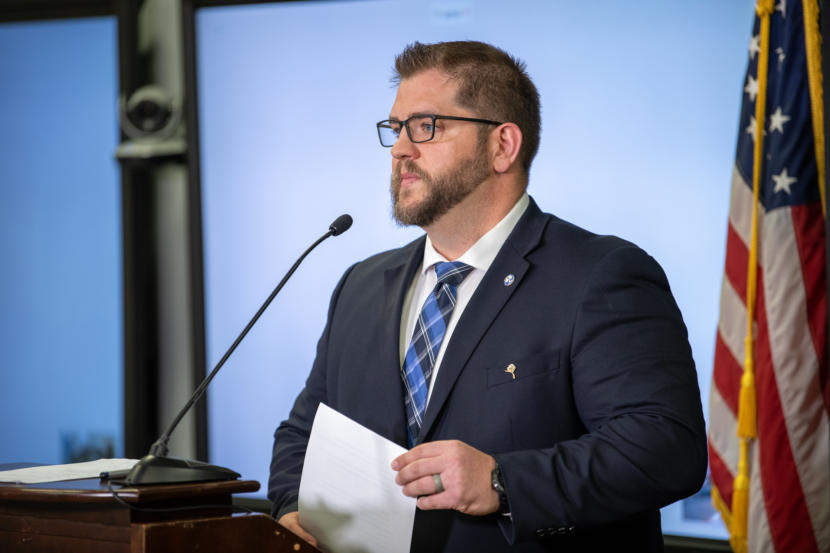
Gov. Mike Dunleavy issued eight health orders on Sunday under a new disaster declaration that replaces the previous declaration.
State Health and Social Services Commissioner Adam Crum said the orders allow health care providers to deliver care with flexibility from federal rules. And they’re intended to slow the spread of COVID-19, particularly among health care workers and first responders.
“We did this disaster declaration because we needed to deliver health care with the federal flexibilities, and we also needed to continue to make sure that everyone understands how important it is that we tamp down on the system,” Crum said.
Some of the orders extend provisions of mandates that have been in place for months, including rules governing travel in and out of Alaska.
But they also include some new provisions. One order requires any traveler from the road system to rural communities to quarantine until they have a negative test result.
State Division of Public Health Director Heidi Hedberg said the order was developed after consulting with rural communities.
“We’re asking that individual to get a negative test result, or to have a negative test result before travel,” she said.
The quarantine and testing requirement also affects people traveling from off of the road system to the road system. It asks them to get a test if they’re traveling for more than 72 hours.
Some legislators have raised concerns about Dunleavy issuing the disaster declaration. They cite a state law that requires the Legislature to approve any extension of a disaster declaration that lasts more than 30 days.
Juneau Democratic Sen. Jesse Kiehl said the declaration wouldn’t withstand a legal challenge.
“It’s really important,” he said. “Agree or disagree, we’ve got to do it in the constitutional way. Each branch of government has to respect the power of the other. And we ought to be able to work together to at least bring the question to resolution.”
Acting Attorney General Ed Sniffen said Dunleavy has the power to issue a new declaration, though he said it would be in a “gray area” if it’s challenged.
“Absent any other options, for convening the Legislature safely to consider these issues, this is something we believe the governor does have the authority to do under the Disaster Act, which makes it fairly clear that he does have broad authority to declare these disasters,” Sniffen said. “And it was just in the best interests of the public for this disaster declaration to continue, so we could continue some of the same protections that we were enjoying under the prior disaster declaration.”
Sniffen said it’s unclear what legal advice his department will provide Dunleavy when the new declaration expires in 30 days.
